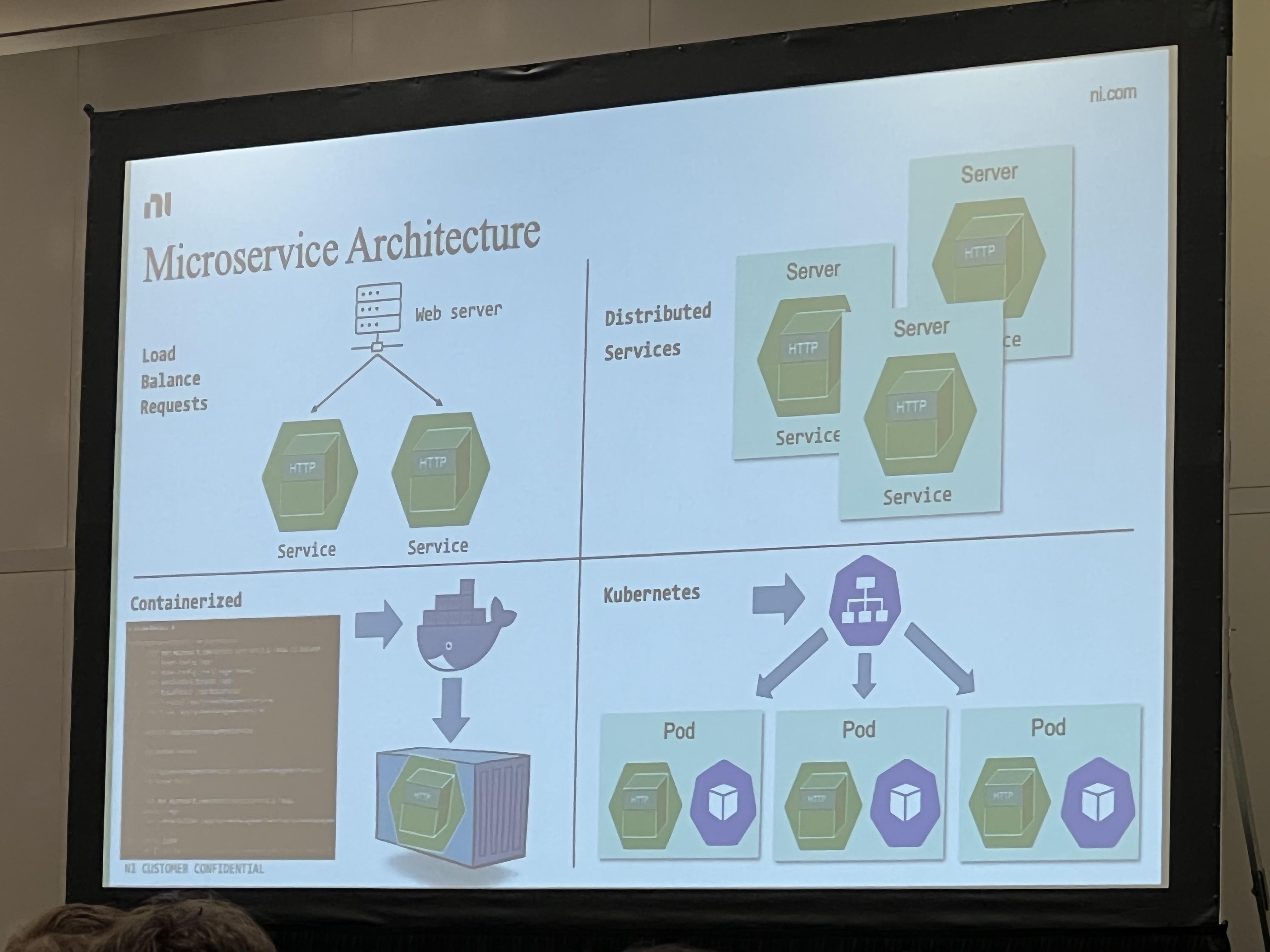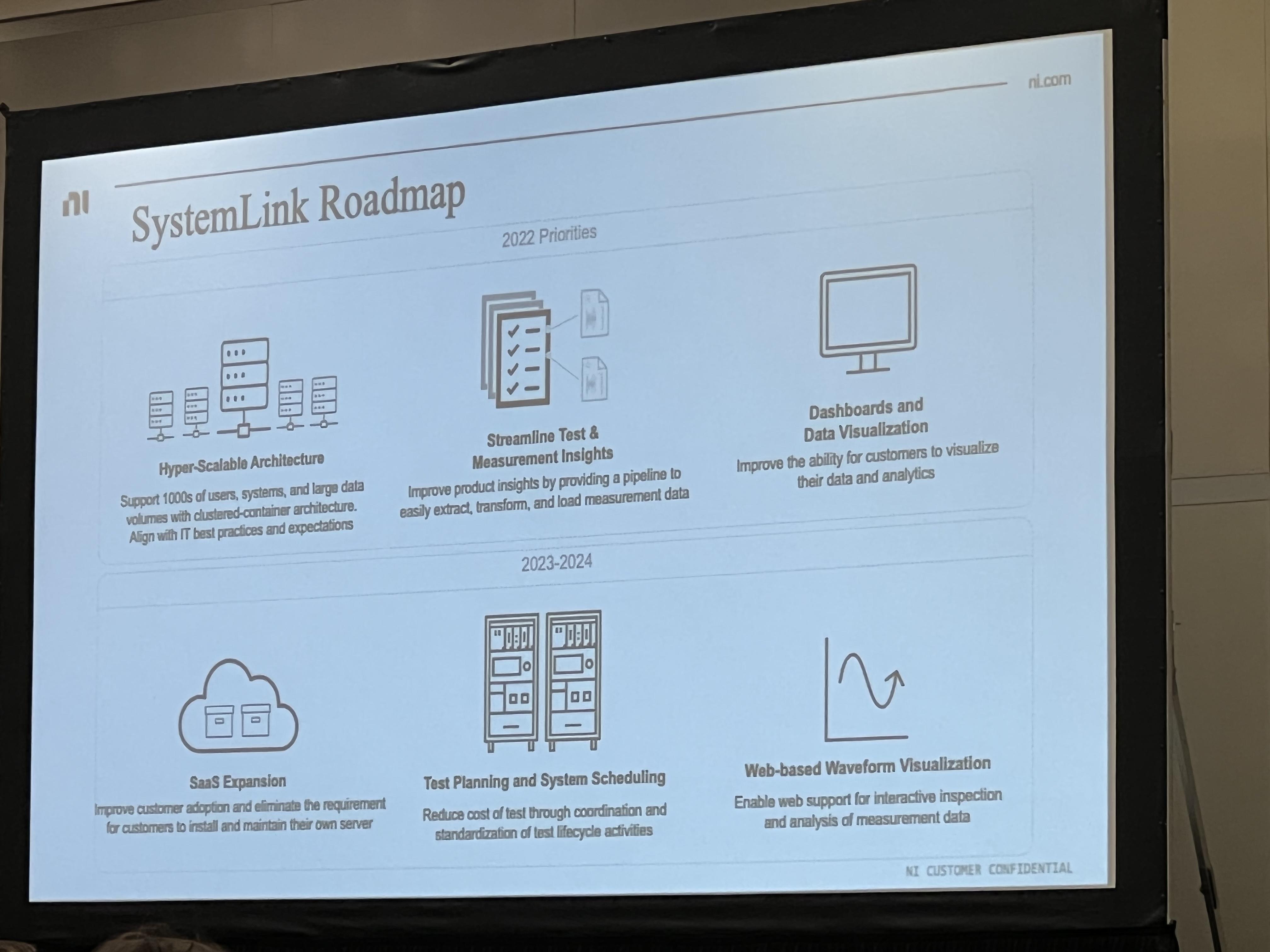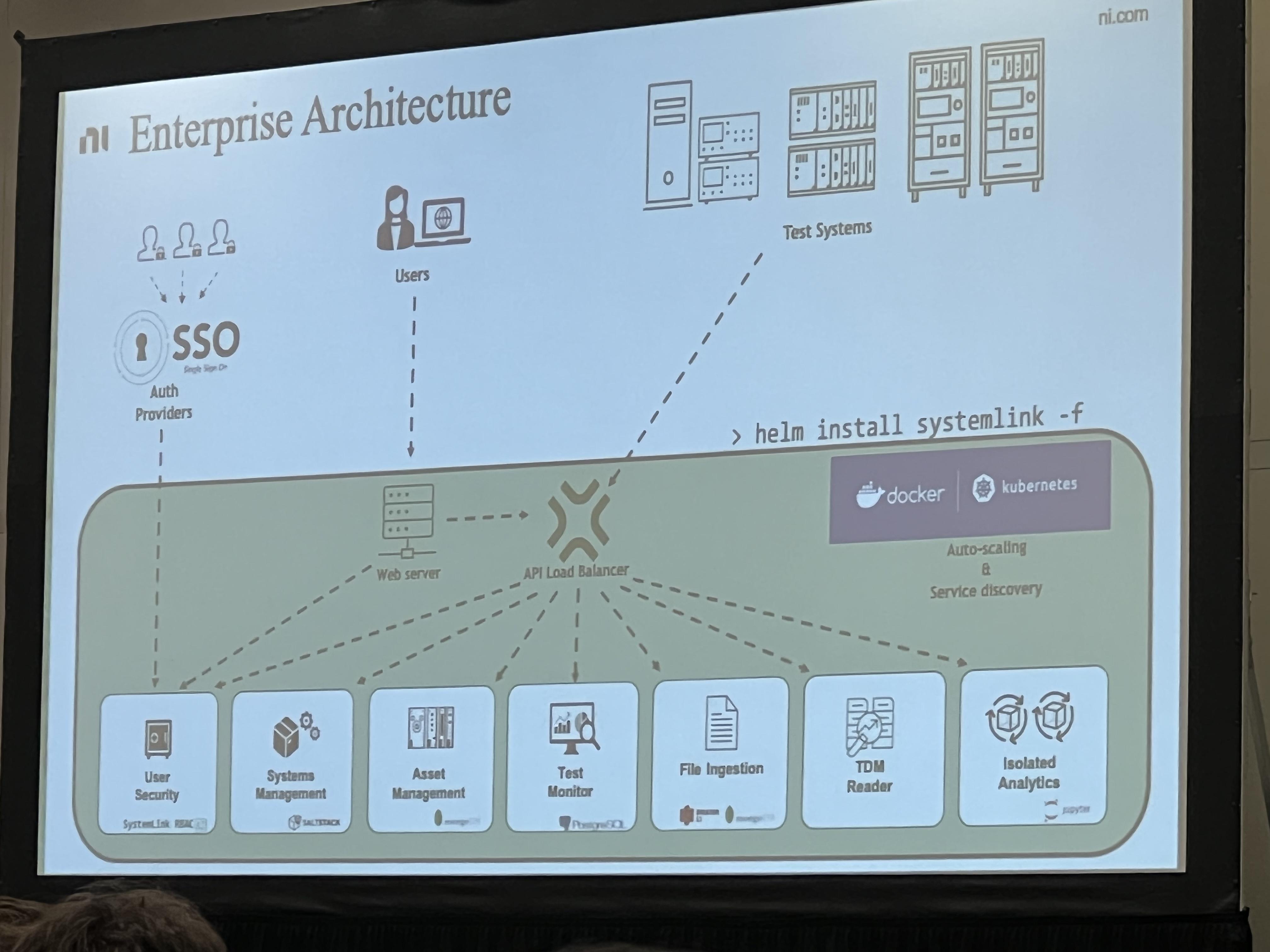-
Posts
695 -
Joined
-
Last visited
-
Days Won
21
Content Type
Profiles
Forums
Downloads
Gallery
Everything posted by Jordan Kuehn
-
*ahem* Not that I'm suggesting that you do bother haha.
-
I have had a passing interest. I think you were extoling its virtues some time ago. But when I saw I'd be needing to build the LV implementation of the protocol from scratch I lost interest. I also didn't see a lot of wide adoption at the time in areas where I was working, but that is probably worth a fresh look.
-
I am intrigued by a separate "NI Create" event for developers.
-
If the lumpiness of contracts does not appeal to you, going out as a consultant will be more of that but you'll also be in charge of sales, purchasing, invoicing, and customer relations. I worked as a LV consultant in a small group for 10 years, managing the Test and Measurement business side as well as the programming. It's a lot of work, but if you enjoy handling that it is rewarding and you gain experience in a wide variety of fields and applications. I now work for an oil and gas company as the lead LV developer and do enjoy the stability as compared to consulting. There's also the ability to continue to develop applications to full maturity over a longer development cycle than turn-key testers. I'd say it really depends on what type of work and experience you are looking to gain in your career.
-

Office 365/Excel and ActiveX
Jordan Kuehn replied to Dan Bookwalter N8DCJ's topic in Calling External Code
Office 365 gave me many headaches in the past. Additionally updates would change the ActiveX interfaces breaking compatibility unless you reloaded and recompiled. I would typically try to purchase a single seat permanent license for a particular test stand and not use the IT software. Not sure if that is an option for you. -
Does this work for cRIO and RT targets? Raspberry Pi running LV?
-
Fair enough. Good luck and please keep us up to date as you progress or need beta testers!
-
I assume you are familiar with these already? https://github.com/LabVIEW-Open-Source/LV-MQTT-Broker https://www.wireflow.com/products/software/wf-wirequeue-mqtt-toolkit/ I use the latter extensively, both in Windows and Linux RT. I have some curiosity regarding the first one, both the client and the broker, but have yet to try it out. I do not know how many of us there are, but I do use MQTT heavily and would welcome an additional (paid or OSS) toolkit. One feature of a native broker that I would love to see is the ability to cluster brokers like EQMX or other.
-
If still active I would appreciate the link as well.
-

Ack , need help with cRIO 9035 ASAP
Jordan Kuehn replied to Dan Bookwalter N8DCJ's topic in Real-Time
https://www.ni.com/en-us/shop/software/products/embedded-control-and-monitoring-software-suite.html -
That is working to measure loop iteration time. Stores the initial time in a shift register. Then each iteration takes the current time and subtracts the previous, while also storing the current time in the register for use in the next iteration.
-

Ack , need help with cRIO 9035 ASAP
Jordan Kuehn replied to Dan Bookwalter N8DCJ's topic in Real-Time
Is your HMI a PC running LabVIEW or is it something else? If the former, you can certainly use Network Shared Variables and get quite a lot accomplished. Especially if you just intend to expose the data to the host code and let it handle the logic and controls directly. You can also look at network streams if you want lossless communication, and/or to pass command/responses. If not LabVIEW then you'll need to look at the protocols it supports and make a determination regarding where you want the logic parts to live. I typically find myself wanting to put as much in the cRIO as possible and keep the UI pretty thin/lightweight, especially if I want to have multiple UIs for the same device. -
perfect. I think you can swap LVOOP in there too
-
One big upside to the Enterprise version that I can see would be the High Availability feature as a result of the Kubernetes clusters. I'm no IT expert, but with what I know about this it seems like a very good choice to break the various components into individual clusters and allow for individually scaling them out as well as redundancy.
-
I would augment that with "...without community presentations OR (many) R&D presentations...". I went to several and almost all were of the Marketing variety of NI presentations, while I think there was just the one from AQ on Interfaces that I felt was really valuable. I do like the exposure to new products, but I get the most value from the advanced software presentations that R&D brings as well as the community presentations.
-
At risk of derailing this thread, where is the documentation for these methods? I'm aware of local windows users and LDAP. Further, you do rightly point out the difference between systemlink and webvis. My conflation is due to wanting to utilize systemlink *and* webvis to serve data and dashboards to customers utilizing the same authentication method. As noted above the workspaces have issues with filtering properly using the system filter. I am only aware of workspaces as the ability to segment out accessibility of systems to users and even then I may want to limit data views via certain dates (system is on rent with different customers at different times), but that is another can of worms.
-
I may have misheard/misspoken here, but I thought they mentioned more open authentication methods/user management. Agreed strongly with this. With the price tag SL commands I shouldn't be making my own user management. Which is partially why I haven't implemented the method in the video I linked.
-
I too would like something native like this. We have dashboards that we use internally that customers would also use, but there is no built in method to segment that out best I can tell. The system filter doesn't respect workspaces either (shameless idea exchange plug) which would be one potential workaround. I do recall seeing some OAuth options on a slide (ETA: see the last slide I posted above) for the enterprise version which would be a step in the right direction. I had that presentation in my recent memory because I have it somewhere in the queue of items to try when implementing a customer facing dashboard.
-
I think this presentation from NIWeek 2019 may be on point here:
-
Enterprise version of SystemLink with containers sounds fantastic. Hopefully they will include it with the already expensive license cost.
-
Job Details Description Software Engineer What is a Software Engineer? The Software Engineer is responsible for maintenance and development of software that is core to our Freedom Series Completion System. The ideal candidate will have demonstrable software programming capability (specifically in LabVIEW), control systems experience, mechanical aptitude, ability to direct others, and an ability to operate in a fast-paced environment. This position can be located anywhere in the United States but will require some travel to Oklahoma City at the beginning of the position, and then as needed potentially for a few days to a week each month. Job Listing Here
-
We have gotten "media" recently. It took a few weeks and they mailed a piece of paper with a serial number on it.
-

Calling a bash script on RT target programmatically
Jordan Kuehn replied to Sam Dexter's topic in Real-Time
I think Mads method will work. I think it's frowned on, but probably the most straightforward. Alternatively you could figure out what permissions are set on the script file and required for the operations it calls, then make all of those executable by the lvuser. All of this is annoying enough in linux, but then Linux RT user permissions and file permissions are even more complicated than usual as some permissions are reset on boot. This pdf is a good reference and I think is still valid despite its age. https://www.ni.com/pdf/support/us/ni_linux_real-time_security_user_guide.pdf- 3 replies
-
- labview2017sp1
- real-time
-
(and 2 more)
Tagged with:






